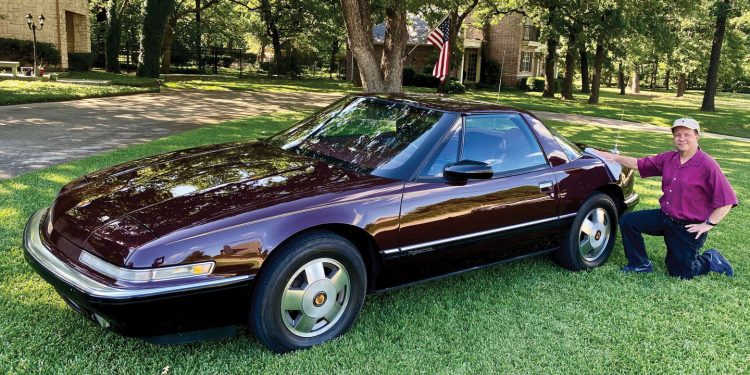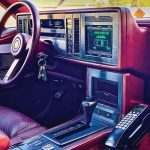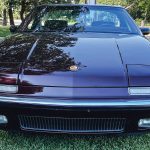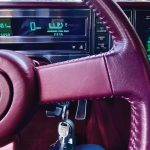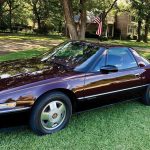Compliant with the rules of social distancing, I didn’t venture further than my son’s home to produce this month’s classic car feature.
It’s a story in the making for the past 32 years.
I don’t think it was an over rationalization when I decided to purchase this amazing new Buick because it had my initial right there on the front of the hood. And, in the center of the steering wheel.
So, to carry out my apparent responsibility in 1988, I brought this really cool two-seater home, and, after more than three decades, it remains in the family.
My wife Sylvia was the first to have it as her car after I had acquired something that could accommodate more than one other person, and now it is the proud possession of my son Brian.
With the help from the only major supplier of parts for this rare GM production car, he keeps it in top condition with all of its breakthrough technological features working just as they were when it rolled off Vandergriff Buick’s showroom floor.
General Motors wanted their Buick line to include a two-seater like its Chevrolet Corvette, Pontiac Fiero and Cadillac Allante siblings. That desire resulted in the launch of the Reatta.
The company thought this mostly hand-built coupe would produce a “halo effect” and have buyers showing up to support a projected annual production of 20,000 of this new entry into the market. The halo effect, as explained by Wikipedia, is “an evaluation by an individual and can affect the perception of a decision, action, idea, business, person, group, entity or other whenever concrete data is generalized or influences ambiguous information.”
So, the basis for my decision to buy this car fell right into line with expectations.
However, there were nowhere near enough others like me, and production ended after four years when a total of fewer than 22,000 Reattas had been sold.
I suppose that is why so often the reaction of people who see Brian driving around town is that they want to know what kind of car this is and sometimes ask, “Is this a new car.”
One day, when returning to the car after class at Baylor University, he found a note under the wiper blade. It simply read, “Cool Car.” That’s because it really is.
Among the car’s innovative, industry-leading features was the touchscreen computer interface marketed as the Electronic Control Center. That included radio and climate control functions, date reminder, trip computer, user-configurable overspeed alarm, as well as diagnostic access to the vehicles electronic systems and sensors.
While somewhat problematic to maintain at the time (Brian keeps his in complete working order), all of these features are commonplace in just about all of today’s domestic and foreign-made vehicles.
In addition to its sleek body style, twin 16-way power leather bucket seats, keyless entry and the transverse Buick 3600 V6 engine producing 170 horsepower with a top speed of 125 mph, these really imperturbable features inside and out resulted in high satisfaction with its owners.
And, don’t overlook that phone attached to the center console and its antenna rising from the trunk lid. It worked right up to the time when analog service was discontinued.
Consumer Guide’s praise upon its debut summed it all up very nicely. “We were honestly surprised by how much we liked it, especially its handsome good looks, and found it more agile, better glued to the road, than any Buick before it.”
Current estimates say there are about 200 Reattas remaining today in Texas. Nationwide their number have dropped by almost half in the past 10 years. But this one is destined to wind up in the hands of the third generation in our family.
Brian’s daughter Ashley just recently acquired her driver’s license. With Dad’s devotion to preservation, she, too, is likely to be fielding those “what kind of car is that?” questions in years to come.
However, that big “R” will always be a reminder of Grandad’s reason for its original acquisition. Did I mention that my initial is also found in the center of all four wheels?

